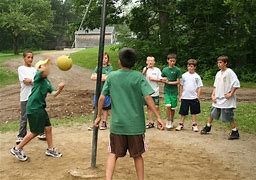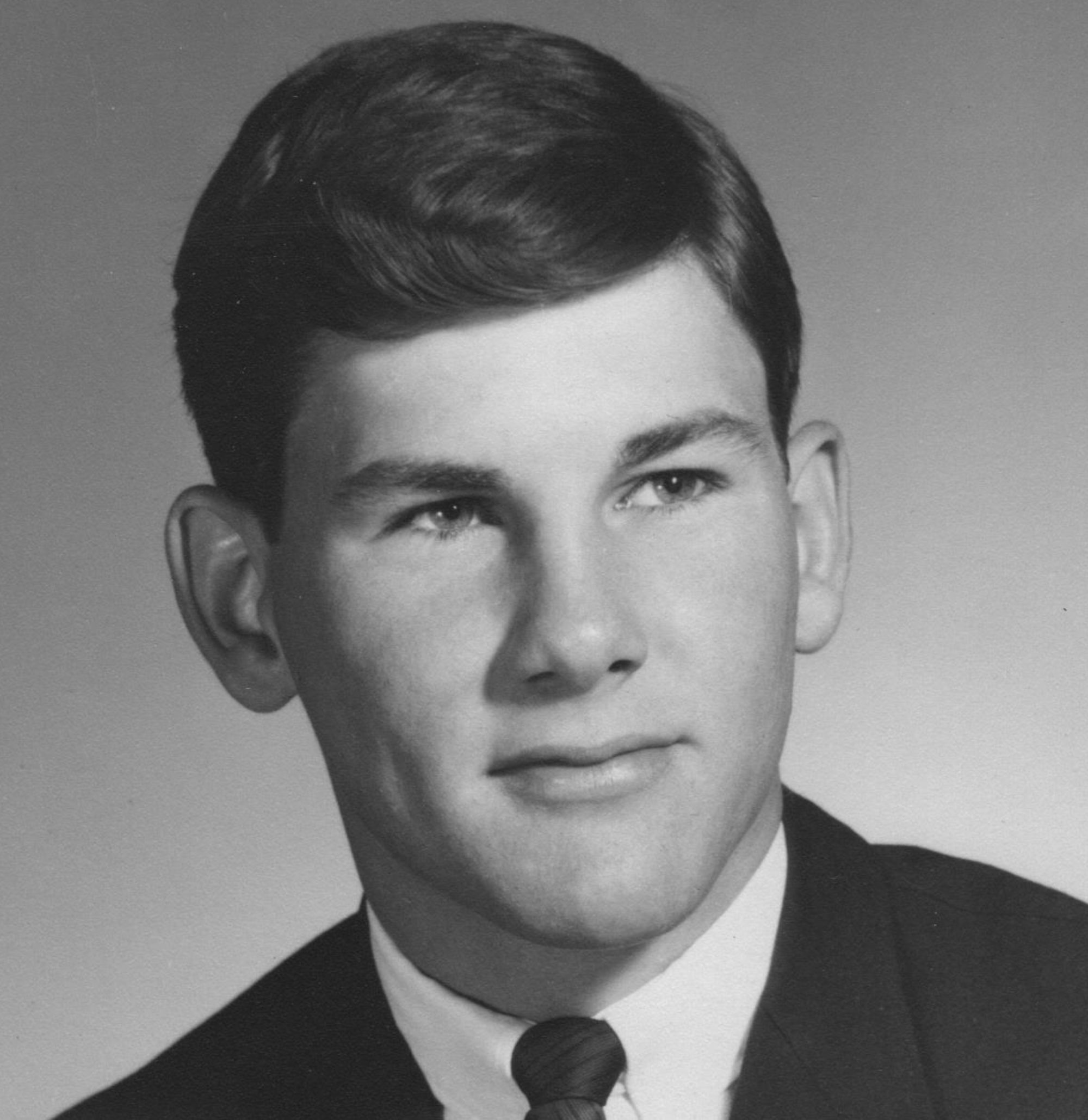
It stood, out the back door, waiting for any and all players. It was there in the rain, it was there in the snow, it was even there during an occasional heartbreak. Weather did not effect its outcome or ability to function. It was alternately a friend or an enemy, based on the way you approached its use. It could be could played individually or competitively. It caused many injuries over the years, some fairly serious. It was not a friend, but there was something magnetic about it’s presence. It was Tetherball.
When we moved to our new house in 1963, Dad was looking for something to install that three boys could play. I being the oldest, had the advantage of height and strength against LB1 (Little Brother One) and he generally came out on the losing end of the competition. Being two years shorter was a disadvantage, however he had just had eyeglasses installed on his nose, so he could now see the darn thing. His method of play was one of what we called “hide and wait” style. You see, the object was fairly simple. The two players faced each other on opposite sides of the pole. the object being to get the ball wound around your direction of the pole with no space left on the rope. The “game” was started by one player “serving” the ball in the direction of the other player. The ball was completely unwound from the pole and the server would hit the ball toward the opposing player. Various styles of serves developed over the years, but the ball pitched into the air and hit with the inside of an clenched fist was the most favored in our neighborhood. The other player then had to block the serve by hitting the ball back in the opposite direction. Few other rules were necessary. the person who finally got the ball wound down the pole in their direction was the winner. The manner in which the ball was served or returned was the genesis of many bad bruises or black eyes. If the server was strong enough the ball would sometimes bounce off the head of the opposing player rendering him stunned for a moment and giving the server a momentary advantage to achieve a couple of loops. LB1, being smaller, mastered the “hide and wait” approach. In this maneuverer, he would wait for an opening created by a miss, as the ball was returned, and helped it pick up speed as it sailed by heading back around the pole. If he kept his return close to the pole it was hard to return it with any sort of force. He thereby reduced the competition away from the brute force angle and more to the strategic placement game. Once a player “got ” a few loops on his competitor it was tough to get them unwound, thereby wearing down his opponent by waiting out their frustration.
Tetherball was not a favorite competition of many mothers. They were not witness to the physical activity in our back yard, but they certainly were the refuse when a split lip or busted nose was the result of a particularly active competition. In fact, several Moms banned the activity after their son received an injury that affected his daily chores. One kid was not allowed to play because his Mom felt it would interfere with his piano lessons. In fact LB1 was banned because of the casualty rate of his eyeglasses.
At one time, our tetherball “court” was the main hang out in our neighborhood. Access to the competition was to be had by our unfenced side yard. At our house, anyone was welcome, at any hour of the day. In fact, occasionally, as we were heading upstairs for bedtime, one could hear the constant “whop” of the ball as it was being returned. Once in a while Dad would slip out through the garage back door to remind my buddies that the sun had gone down and they needed to head for home. That fact seemed to escape a few of my older friends.
That tetherball pole and ball remained as a gathering place for many years in our yard. LB2 became the raining neighborhood champ for several years and my little sisters even got into the act. Looking back at the simplicity of the game and the versatility of the sport, I am surprised of it’s lack of diversity in the neighborhood. With reflection however, I guess, the noise and the boys were a problem for some folks. It never seem to bother my Mom & Dad. That’s the way it was at my house growing up in the sixties.
